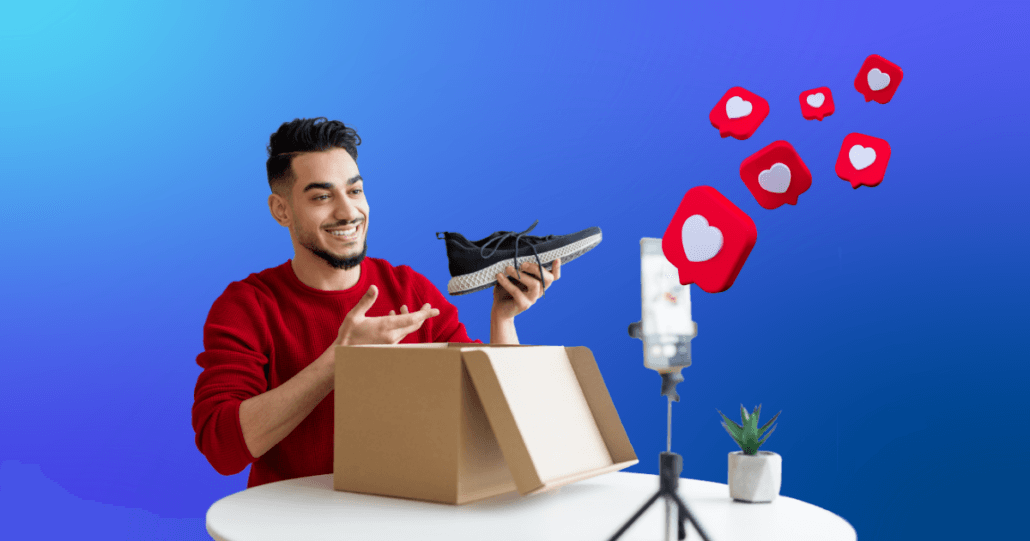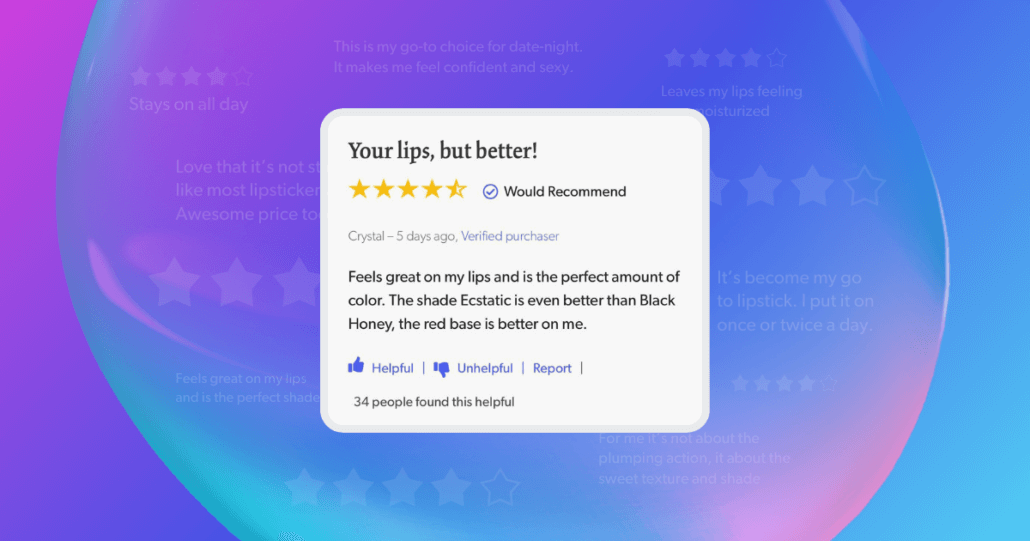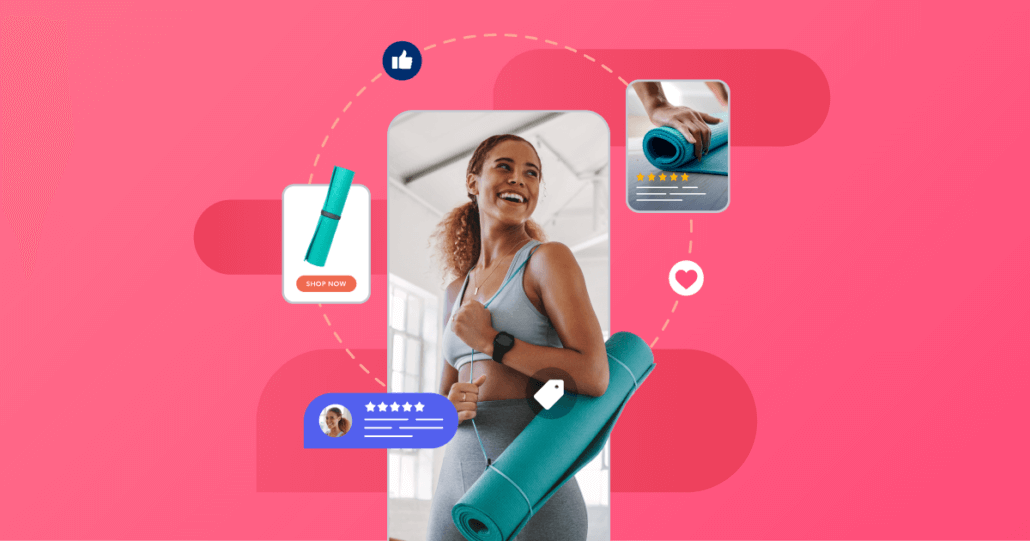February 28, 2024
Suppose you’re a new skincare brand that’s just begun to carve out your space in the competitive industry. One day, an Instagram notification lets you know that a customer tagged you in a raving review of your moisturizer. The marketing team is excited to repurpose the video review on your website, social channels, and future campaigns. Until someone brings up usage rights and promptly puts a stop to the excitement.
If only things were that easy…
The fact is, understanding usage rights is a must for every brand that wants to collaborate with influencers and other creators. Nearly 80% of people tag brands in their social media posts at least sometimes, creating lots of opportunities to leverage user-generated content (UGC) and influencer content.
In this guide, you’ll learn how to repurpose creator content without landing in hot legal waters — or getting (gasp!) “canceled” by a creator.
Chapters:
- What are usage rights?
- Why do usage rights matter
- Types of licensing agreements for usage rights
- Best practices for securing usage rights
- Streamline creator partnerships with Bazaarvoice
What are usage rights?
Usage rights determine how someone — a business or individual — is allowed to use a piece of content they didn’t create or own the rights to.
When you partner with an influencer or UGC creator, you need a usage rights agreement (often called a licensing agreement) that will define where and how you’ll use the content. The agreement also defines how long you’re allowed to use the content. Some agreements grant usage rights “in perpetuity” (meaning forever), while others set a limitation.
For example, an influencer could grant usage rights to their video review of your product in perpetuity on all digital platforms and also allow you to repurpose the video material for other types of content.
Why do usage rights matter
Agreeing on usage rights is important to set expectations for your influencer collaborations. It puts everyone on the same page regarding your partnership and lowers the risk of legal issues as a result of copyright infringement.
If someone sues you for copyright infringement, you could be on the hook for financial damages. What’s more, you’d have to shelve any marketing campaigns that use the content, adding to the cost.
In addition to lawsuits, your brand could suffer reputational damage — and reputation is everything. Many content creators have loyal followings who might no longer buy your products if the creator goes public with their bad experience. People are drawn to controversy. Coming back from a scandal can take you years and cost plenty of dollars.
Be aware that you also need a licensing agreement for any other copyrighted material a creator uses in their content, like music. Failing to do so could lead to expensive lawsuits.
Just recently, Sony Music Entertainment sued beauty brand OFRA for not getting permission to use copyrighted music when collaborating with influencers. In Sony’s view, the popular music added to the impact of the influencer videos, so OFRA was supposed to compensate them for their use. A similar lawsuit took place between UMG Recordings and Vital Pharmaceuticals.
You might wonder why brands are liable for copyright violations committed by influencers they partner with. After all, you didn’t do anything wrong. Well, the reason is that it’s the brand’s responsibility to verify that the sponsored content doesn’t infringe on copyrighted materials.
So, your usage rights agreements should make it clear that creators aren’t allowed to use content they don’t own.
Types of licensing agreements for usage rights
When you partner with a creator or influencer, or source UGC from social, you’ll establish usage rights using a license agreement.
Creative Commons
A Creative Commons license allows you to use a piece of content as long as you give credit to the copyright owner. There’s seven kinds of Creative Commons licenses, some more restrictive than others:
- CC BY: Allows commercial reuse, distribution, adaptation, and remixing across formats and mediums with attribution to the original creator
- CC BY-SA: Same conditions as the CC BY license, but you must also license the modified content you created under the same conditions
- CC BY-NC: Same conditions as CC BY, except it doesn’t allow for commercial use
- CC BY-NC-SA: You must give credit to the original creator and use the same license for the modified content. Commercial use isn’t allowed
- CC BY-ND: You’re not allowed to adapt the content, but you can share and copy it across formats and mediums with attribution. Commercial use is permitted
- CC BY-NC-ND: The content can be shared only in its original format, with attribution, and for non-commercial purposes
Remember that once a creator applies a Creative Commons license to their work, they can’t revoke it.
Royalty-free
Under a royalty-free licensing agreement, the creator gives you permission to use their content for a one-time payment. You won’t need to pay royalties every time you use the image or video, and the license is granted for an unlimited time period.
This is a common license on stock photo websites, where you can purchase a piece of content and then reuse it as many times as you want. Typically, you don’t have to credit the creator, and you’re allowed to change the content to suit your needs.
Keep in mind that a royalty-free license doesn’t grant you exclusive rights to the content. Other brands can purchase the same image or video and use it in their campaigns.
Rights-managed
In terms of reuse, a rights-managed license is more limited than a royalty-free one. It permits you to use the content in a single project, but it doesn’t cover additional usage in other campaigns.
On the plus side, a rights-managed license can give you exclusive rights to the content so you can be sure your competitors won’t use it (and you rake in brand authenticity points).
Best practices for securing usage rights
Follow these best practices to get your creator partnerships off on the right foot and avoid litigation. Happy legal team = happy life.
1. Do your research
Not all types of content have the same usage rights, which is why you should first research where the content came from.
Note: This applies only if you want to use existing content, not when you’re collaborating with an influencer who has yet to create content for your brand. In this case, jump down to step two, “Get the creator’s permission.”
Let’s say you found an image that would work perfectly on your website’s product page. But there’s no attribution, so you have no idea where the image came from. To find out, try doing a reverse Google Image search, which will pull up all the websites featuring the same image.
If the image came from a stock photo library like Shutterstock, then it’ll be easy to determine usage rights. On Shutterstock, for example, there are “Standard” and “Enhanced” licenses that depend on your subscription type. Each license specifies how you’re allowed to use the content.
What about videos on Instagram or TikTok that you want to reuse? The first step is to double-check if the account owner actually created the video and didn’t just repost it from somewhere else. Then, contact the creator to get their written permission.
2. Get the creator’s permission
If you’re partnering with an influencer who will produce UGC for your brand, you’ll also need a contract to establish usage rights.
Written permission can be in the form of a formal licensing agreement that describes where and how you’ll use the content. You might also specify compensation and how long you intend to use it.
If you just want to share a creator’s content to your profile, then a simple message asking their permission could suffice (the kids call it sliding into their DMs). However, make sure to clear this with your legal team first, especially if you’re not sure if the creator has used someone else’s copyrighted material in their content, like music.
Remember to archive these communications in case any legal issues arise. The more receipts you have, the better.
3. Be ready to negotiate
Some creators are happy to share their content for free. Others want to be compensated for their time and effort, so you might need to negotiate their rates.
Compensation depends on many factors. If someone grants you an exclusive, perpetual license to their content, then they might ask for a much higher fee. Consider limiting the duration of the license to six months or a year to get a lower rate.
The scope of usage also influences compensation. If you only plan to repurpose a creator’s video on your website, it could give you some room to negotiate their fee.
Be upfront with any compensation limitations. For example, some brands prefer to pay first-time collaborators in merchandise. Mentioning this at the very end of your negotiation could frustrate the creator and put them off from working with you.
4. Use digital asset management software
As your influencer marketing partnerships grow, you’ll need an easy way to manage your digital assets and ensure you aren’t violating their usage rights.
With digital asset management software, you can track usage rights for all of your assets in one place. It will prevent you (and anyone else on your team) from using content with an expired license.
Streamline creator partnerships with Bazaarvoice
Strategic partnerships with the right creators will put your brand in front of the right audiences. But finding the right creator, securing usage rights, and ensuring they produce on-brand content is a lot to juggle at once. Bazaarvoice’s Creator Partnerships does the heavy lifting for you with our community of trusted creators.
You just need to set content goals and define your audience and messaging. Then, a Bazaarvoice Strategist will take over to find the right creator and negotiate the terms. Any content they create can be repurposed on your other channels so you can make the most out of the partnership and bask in the benefits of influencer marketing.
Get started






